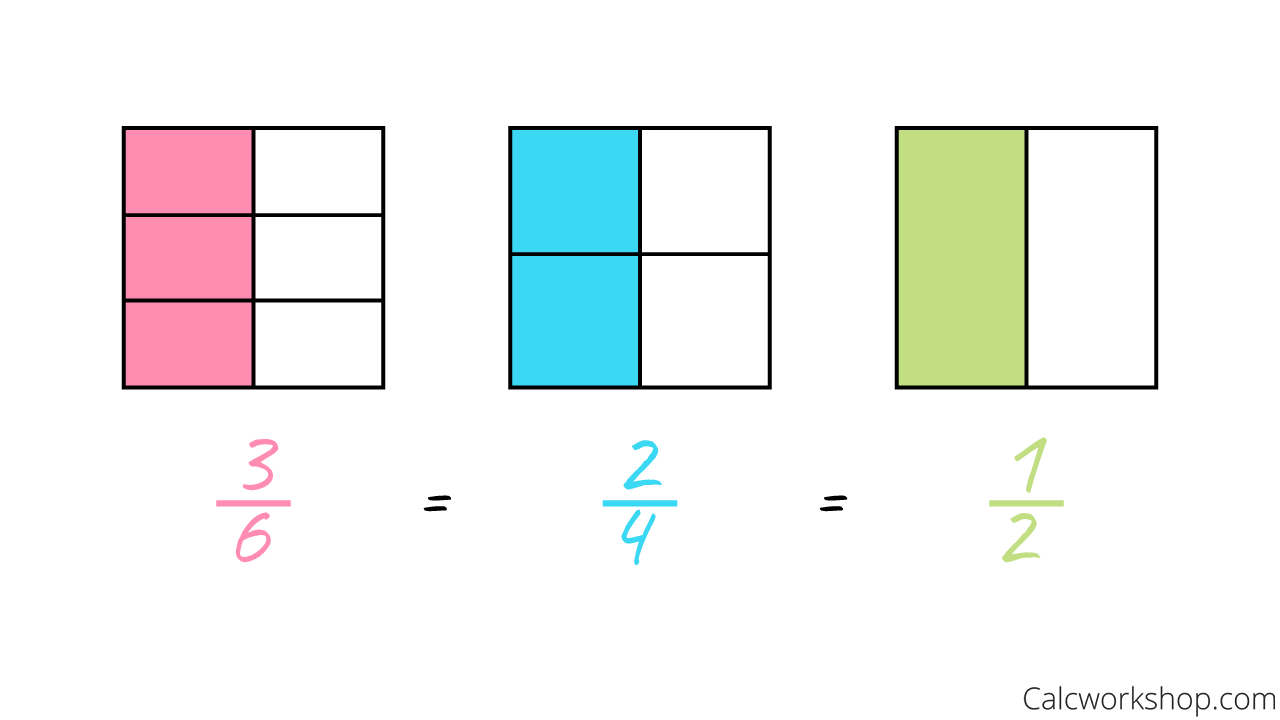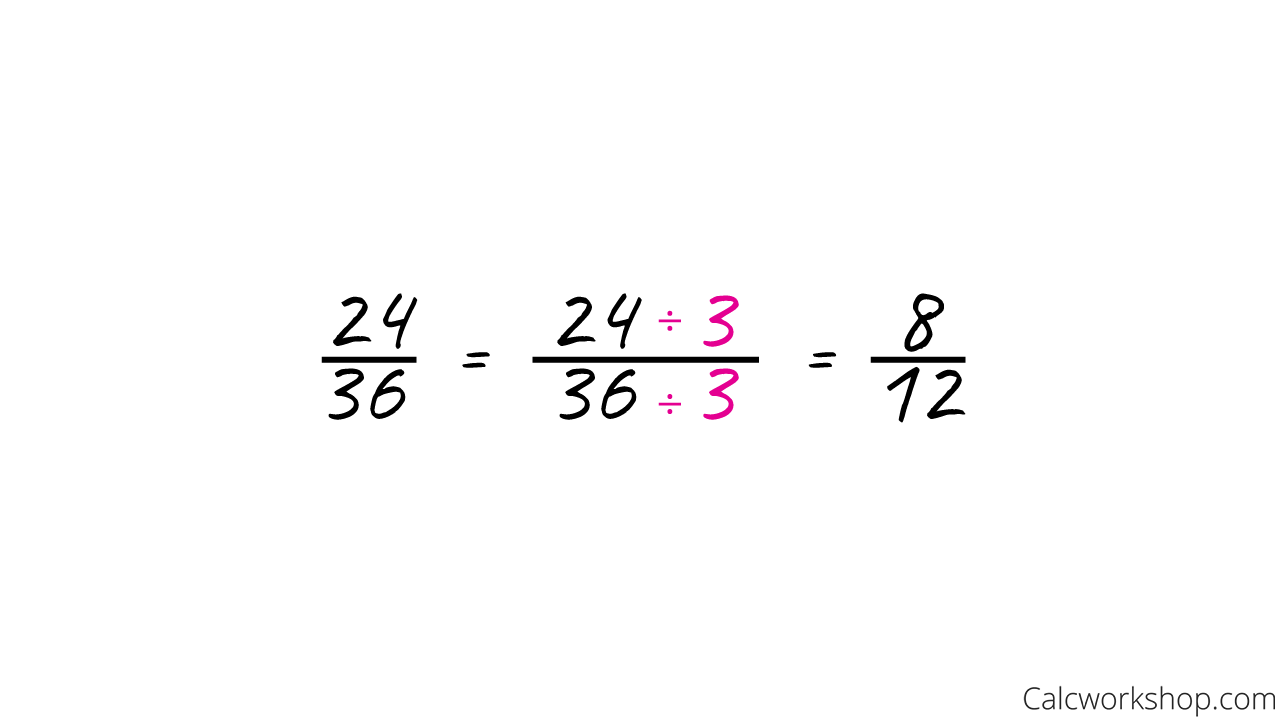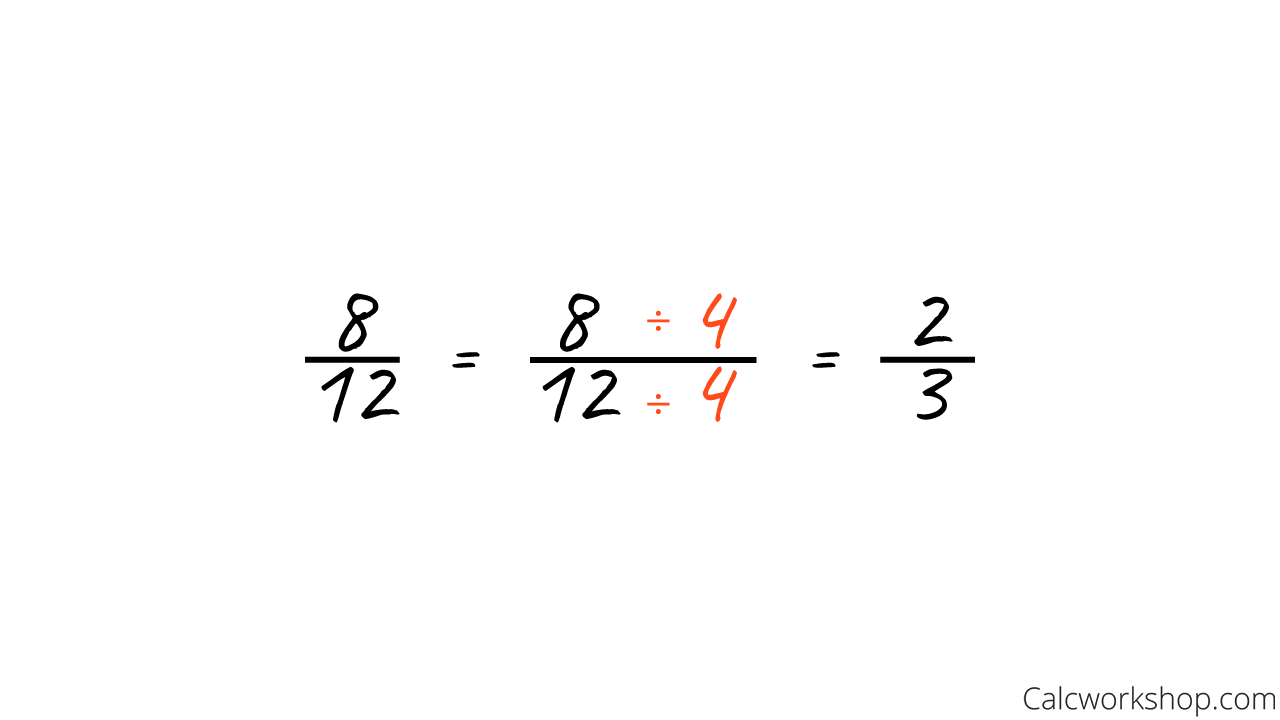How to simplify fractions?

Jenn, Founder Calcworkshop®, 15+ Years Experience (Licensed & Certified Teacher)
Great question!
And in today’s math lesson, you’re going learn two different methods to do just that.
Overview
The word simplify means to make something easier to do or understand.
So, reducing or simplifying fractions means we make the fraction as simple as possible.
We do this by dividing the numerator and the denominator by the largest number that can divide into both numbers exactly. In other words, we divide the top and bottom by the biggest number they have in common.
Note that the numerator and denominator are called “terms” of a fraction. So, if we simplify a fraction, we reduce the fraction to the simplest terms.
For example, notice the three rectangles below where the left-hand side of each rectangle is shaded and the fraction that results represents the shaded part out of the whole rectangle.

Three Equivalent Fractions — Visual
All three images represent the same part to whole, which indicates that each resulting fraction is equivalent to the other. But what is important to recognize is that while they are equal, only one fraction is in simplest terms — 1/2.
And just as this example indicates, our goal is to transform a fraction by creating an equivalent fraction whose terms no longer have any common factors as noted by Lumen Learning.
So, how do we reduce fractions?
There are two methods:
- Guess and Check
- Greatest Common Factor (GCF)
Guess And Check Method
The guess and check method is when we choose a number we know divides evenly into both the numerator and denominator, but we aren’t sure if it’s the largest. So, we may need to continue to reduce the fraction further in necessary.
Worked Example #1
Let’s look at a specific problem.
Suppose we want the simplified fraction of 24/36.
Using the “guess and check method,” we may notice that 24 and 36 are both divisible by 3.
And after reducsing both terms and get 8/12.

Finding Equivalent Fractions — Example
Namely, they are both divisible by 4. This means we need to simplify further.
Notice that this new fraction of 2/3 is fully simplified because neither the numerator nor the denominator has any factors left in common.

Simplifying Fraction — Example
GCF Method
Whereas the greatest common factor (GCF) method will always give us the largest number for which we should divide.
Worked Example #2
Now, let’s work the same example using the GCF method.
First, let’s use factor trees to find the prime factorization of both the numerator and denominator.
And then we identify the GCF from the prime factorization. Remember, when we find the GCF from a list of prime factors, we choose the fewest of what is common.

GCF Using Prime Factorization
This means that when reducing the fraction 24/36, we should divide both terms by 12, as this is the GCF for both terms.

Reduce Fractions To Lowest Term
Worksheet (PDF) — Hands on Practice
Put that pencil to paper in these easy to follow worksheets — test your knowledge!
Simplifying Fractions — Practice Problems
Simplifying Fractions — Step-by-Step Solutions
Final Thoughts
Both methods are perfectly acceptable, and it comes down to personal preference as to which technique you wish to employ.
It is apparent that if your “guess” is also the GCF, you will simplify your fraction fast, as the GCF will always yield the lowest possible reduction.
Throughout this lesson, we will look at numerous examples of how to reduce fractions to simplest form as well as some applications problems where we will first create a fraction and then reduce it to the lowest terms.
Let’s jump right in!
Video Tutorial — Full Lesson w/ Detailed Examples
37 min
- Introduction to Video: Simplifying Fractions
- 00:00:34 – How do we simplify fractions?
- 00:11:29 – Reduce each fraction to simplest terms (Examples #1-6)
- 00:25:34 – Write the fraction from the given table and reduce your answer (Examples #7-8)
- Practice Problems with Step-by-Step Solutions
- Chapter Tests with Video Solutions
Get access to all the courses and over 450 HD videos with your subscription
Monthly and Yearly Plans Available
Still wondering if CalcWorkshop is right for you?
Take a Tour and find out how a membership can take the struggle out of learning math.